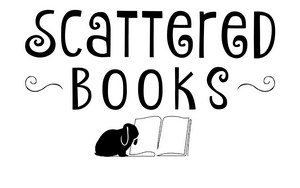
01 Mar The Dubliners by James Joyce – Review, Summary and Analysis

Summary
“Dubliners” is divided into four sections, each focusing on a different stage of life: childhood, adolescence, maturity, and public life. The stories are interconnected, with characters from one story often appearing in another. The collection opens with “The Sisters,” which introduces the theme of paralysis, both physical and emotional, that pervades the entire book. Other notable stories include “Eveline,” “Araby,” “A Little Cloud,” and “The Dead,” which is often considered the most accomplished story in the collection. Recurring themes in “Dubliners” include the struggle for identity, the tension between personal desires and societal expectations, and the search for meaning in a seemingly meaningless world.
Characters
Some of the primary characters in “Dubliners” include:
- Gabriel Conroy: The protagonist of “The Dead,” Gabriel is a complex character who grapples with his own insecurities and the revelation of his wife’s past love.
- Eveline: The titular character of “Eveline,” she is a young woman torn between her duty to her family and her desire for freedom.
- Little Chandler: A character in “A Little Cloud,” Little Chandler is a man who feels trapped by his mundane life and unfulfilled dreams.
- Mrs. Mooney: The proprietor and mother from “The Boarding House,” Mrs. Mooney is a morally ambiguous character who manipulates relationships to secure her daughter’s future.
Analysis
“Dubliners” is a masterclass in short story writing, with Joyce employing a variety of literary devices and techniques to create a rich and layered narrative. His use of epiphany, a sudden moment of revelation or insight, is particularly noteworthy. Joyce’s prose is also marked by its realism and attention to detail, which serve to immerse the reader in the world of Dublin and its inhabitants. The book’s unique structure, with stories arranged in a chronological order that mirrors the stages of life, adds to its thematic cohesion and depth.
From a holistic overview of the book of stories, James Joyce’s “Dubliners” is an exploration of the lives of ordinary people in Dublin at the turn of the 20th century, marked by themes of paralysis, disillusionment, and the search for meaning in a restrictive society. The collection of short stories portrays characters from various stages of life, from childhood to old age, who struggle with the constraints of their environment, social expectations, and personal vices.
The theme of paralysis, both literal and metaphorical, is prevalent throughout the stories, as characters are often unable to break free from their routines, make decisions, or take action to improve their lives. This paralysis is a reflection of the stifling social and political atmosphere in Ireland during that time, characterized by religious tension, English rule, and interpersonal conflicts.
Another recurring theme is the cyclic nature of life, as the collection progresses from stories about children to stories about young people and adults, ultimately ending with a middle-aged man looking back over his life. This structure emphasizes the passage of time and the inescapable nature of mortality.
The stories also explore the complex relationship between the characters and religion, with many of them grappling with their faith or questioning its relevance in their lives. Additionally, the collection highlights the role of alcohol in Irish social life, often portraying its harmful effects on individuals and families.
In summary, “Dubliners” offers a vivid and unflinching portrayal of the lives of ordinary people in Dublin during a time of social and political upheaval, revealing their struggles, dreams, and disappointments. The collection serves as a powerful commentary on the human condition and the universal desire for connection, meaning, and purpose.
The Stories:
Below are the titles and short synopses of each story in James Joyce’s “Dubliners”:
- The Sisters: A young boy grapples with the death of Father Flynn, a priest, and reflects on his strange behavior before his passing.
- An Encounter: Two boys skip school to explore Dublin, eventually meeting an odd old man who makes them uncomfortable with his sexual innuendos.
- Araby: A young boy becomes infatuated with his friend’s sister and attends a bazaar called Araby to buy her a gift, only to be disappointed by the reality of the event.
- Eveline: A young woman named Eveline struggles with the decision to leave her abusive father and Dublin to start a new life with her lover in Argentina.
- After the Race: Jimmy Doyle spends an evening with his wealthy, cosmopolitan friends after a car race, ultimately ending up broke and disillusioned.
- Two Gallants: Lenehan and Corley plot to swindle a housemaid, with Corley successfully obtaining a gold coin from her.
- The Boarding House: Mrs. Mooney, a boarding house owner, intervenes in her daughter Polly’s courtship with a tenant, Mr. Doran, to ensure he proposes marriage.
- A Little Cloud: Little Chandler, a dreamer and aspiring poet, reunites with his successful friend Gallaher, leading him to feel trapped by his own mundane life.
- Counterparts: Farrington, a downtrodden office worker, seeks solace in alcohol after a humiliating encounter with his boss, leading to a violent confrontation with his son.
- Clay: Maria, an aging spinster, spends her evening at the home of Joe Donnelly, a man she cared for as a child, only to lose a special plum cake she bought for the family.
- A Painful Case: Mr. Duffy, a reclusive man, ends his relationship with Mrs. Sinico after she makes an intimate gesture, later learning of her tragic death in a train accident.
- Ivy Day in the Committee Room: A group of men working for a mayoral candidate discuss politics and the legacy of Charles Stuart Parnell, an influential Irish politician.
- A Mother: Mrs. Kearney becomes increasingly frustrated and humiliated as she tries to secure payment for her daughter’s piano accompaniment at a concert series.
- Grace: After a public accident, Tom Kernan attends a Catholic retreat in an attempt to reform his alcoholic lifestyle, reflecting on the need for forgiveness.
- The Dead: The final story follows Gabriel Conroy as he attends a party with his wife, Gretta, and learns about her past love, leading to a profound realization about life, love, and mortality.
These stories provide a naturalistic depiction of Irish middle-class life in and around Dublin in the early 20th century, exploring themes of paralysis, disillusionment, and the search for meaning in everyday life.
Evaluation
“Dubliners” will appeal to readers who enjoy character-driven stories and intricate explorations of human psychology. Fans of modernist literature will also appreciate Joyce’s innovative storytelling techniques and his contribution to the development of the short story as a literary form. While some may find the book’s pessimistic tone and lack of resolution off-putting, others will see it as a testament to Joyce’s unflinching honesty and commitment to artistic integrity.
Possible questions for a high school test:
- What is the significance of the theme of paralysis in “Dubliners”?
- How does Joyce use epiphany in his stories, and what purpose does it serve?
- Compare and contrast the protagonists of “Eveline” and “A Little Cloud.” What do their stories reveal about the human condition?
- Discuss the role of setting in “Dubliners.” How does Joyce use Dublin as more than just a backdrop for his stories?
- Analyze the use of symbolism in “Araby.” What does the bazaar represent for the story’s protagonist?
Sources and Other Reviews:
- SparkNotes: Dubliners
- The Paris Review: Dubliners at One Hundred
- The Guardian: Dubliners by James Joyce – a masterclass in the art of the short story (4/5 stars)
Awards and accolades:
While “Dubliners” itself has not won any awards, it is widely regarded as a classic of modernist literature and has had a significant impact on the development of the short story genre.
Where to Buy the Book
You can purchase “The Dubliners” by James Joyce from Bookshop.org.
Functional, bibliographic details:
- ISBN: 9780061350962
- Number of pages: 160 (varies by edition)
- Publisher Name: Penguin Classics
- First publish date: June 15, 1914
- Genre: Short stories, Literary fiction
- BISAC Categories: FICTION / Literary, FICTION / Short Stories (single author)
- Suggested Reading Age: 16 and up
About the Author
James Augustine Aloysius Joyce was an Irish novelist, poet, and literary critic, born on February 2, 1882. He is best known for his novels “Ulysses” and “Finnegans Wake,” as well as his short story collection “Dubliners.” Joyce’s work is celebrated for its innovative use of language and its exploration of the human condition. He passed away on January 13, 1941.
Spoilers/How Does It End
The final story in “Dubliners,” “The Dead,” concludes with the protagonist, Gabriel Conroy, experiencing an epiphany about his own life and the nature of existence. After learning about his wife’s past love, Gabriel is forced to confront his own insecurities and the inevitability of death. The story ends with a powerful and poignant reflection on the interconnectedness of the living and the dead, and the ultimate insignificance of individual lives in the grand scheme of things.
Conclusion
“The Dubliners” by James Joyce is a captivating and thought-provoking collection of short stories that delve into the lives of ordinary people in Dublin during the early 20th century. With its rich themes, complex characters, and masterful storytelling, this book is a must-read for anyone interested in Irish literature or the modernist movement. Purchase “The Dubliners” from Bookshop.org and immerse yourself in the world of Dublin and its inhabitants.







